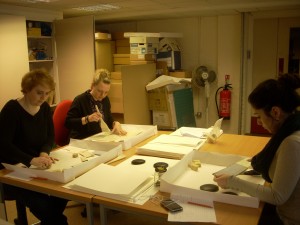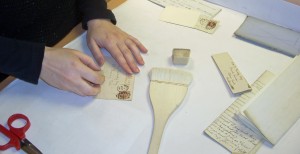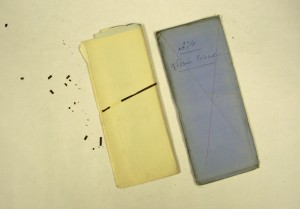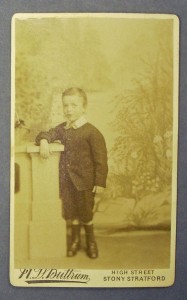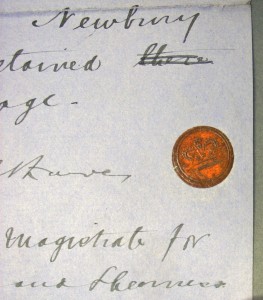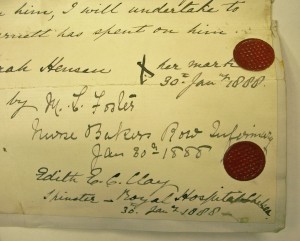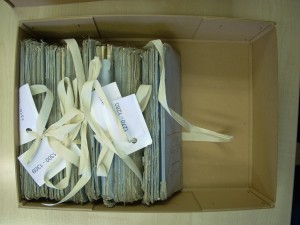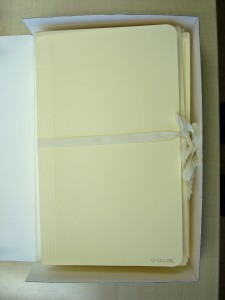Today, we have a guest post written by one of our Project Conservators, Rebecca Regan.
***
Hello, blog readers. My name is Rebecca and I am one of the paper conservators currently working on the Unexplored Riches in Medical History project at The Children’s Society Records and Archives Centre. As Janine, the project archivist, has described in a previous posting, the project has the twin goals of both cataloguing and indexing parts of the archive that can be used to study medical history as well as of preserving the case files to prevent deterioration of the documents. Both these objectives aim to increase access to these records for researchers.
The conservation part of this project started at the beginning of January. Since then my colleague, Julie, and I have been ordering materials and tools, recruiting volunteers, establishing project protocols and, of course, making a start on the practical work.
The earliest case files consist of bundles of folded documents; almost all of them being stored in blue envelopes. Many of these envelopes are in a very poor physical condition. Usually each envelope contains one case file, although sometimes siblings’ files share one envelope.
The contents might be a single piece of paper or several hundred. Once we found an empty envelope; we don’t know why. The documents have almost all been sharply folded, most of them multiple times. Some are fastened with rusty pins or clips.
A few bear the hardened traces of what was once a rubber band. Most of the documents are very dirty. (They are now stored in boxes with lids but clearly that has not always been the case.) Many of the papers are poor quality substrates: innately brittle and acidic. It is difficult to remove the documents from the historical blue envelopes and usually impossible to replace them.
In the short space of time allotted to the project, Julie and I aim to improve the condition of, and accessibility to, as many of these case files as possible. Each case file is treated in this way: we remove the documents carefully from the envelope and then we unfold, surface clean and press each sheet, if it is possible to do so safely. Some documents we have to relax through humidification before we can press them, because they are too brittle to press when dry. Documents written on parchment (the prepared skin of an animal, e.g. sheep, goat or calf) also require this humidification process before flattening as this material is thicker and less flexible than paper is.
Most of the case files contain only textual documents but we have also found a few photographs which allow us to see the faces of the children described in the files.
We have also come across a few red wax seals with patterns on them. They provided authentication of an official document at the time, but to us today they also look rather decorative. We do not press any document which contains a wax seal as it would, of course, crack the wax.
Once the documents have been pressed, we put them in archival folders which are stored in acid free boxes. So far we have processed over 700 case files.

